Reproduction
Pink peony belongs to ornamental crops that serve for "live" decoration of the garden. There are several ways to propagate beautiful flowers.
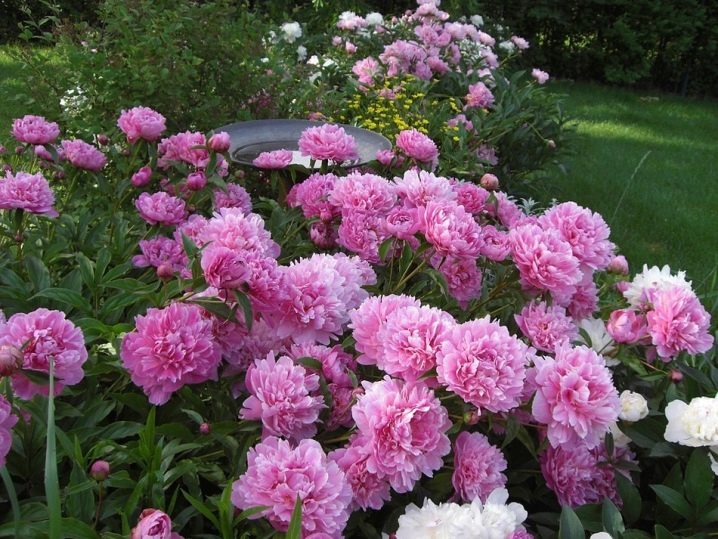
Dividing the bush
Suitable for plants that have reached the age of 5-7 years. Procedure period: second half of August - mid-September. The procedure is recommended to be repeated every 5-7 years.
Stages:
- dig up the bushes, rinse the roots with water and dry;
- cut off shoots, leaving their height at the root of 10-15 cm;
- divide the rhizome into parts, each of which must have at least three buds to resume growth;
- soak the resulting parts in a solution of potassium permanganate for 2-3 hours;
- remove weak and damaged roots by covering the wound with an ointment made from ash and clay;
- plant the divisions prepared in this way to a new place.
Cuttings
Root cuttings are harvested after flowering. A young shoot is selected that has roots with a replacement bud. Cut off the stem, shortening it in height, soak the root part in a growth stimulator. Planting is carried out in the shady zone after half a day of soaking. After the first frost, the shoots are cut off, and the root part is covered.
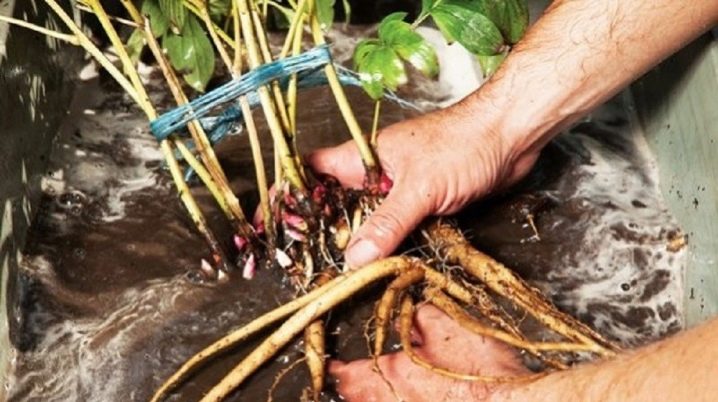
The green stem cuttings are cut a week before the buds bloom. Only the inner stems are used, cutting them at the root. Cut trunks are cut, soaked and planted under the shady crown of trees, covered with a portable greenhouse. High humidity is maintained in the greenhouse, and after two decades they begin to ventilate. In late autumn, cuttings are cut and the roots are covered.
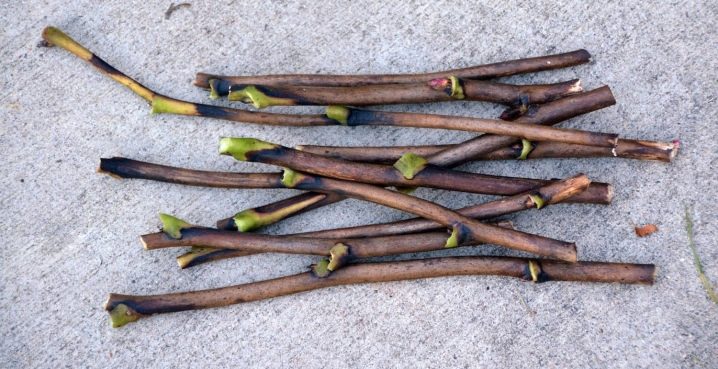
In the spring, in the first decade of April, a five-year-old peony bush is dug up, opening vegetative buds. Cover with a small container without a bottom measuring 50x50 cm, which is filled with fertile soil. The soil in the container must retain moisture. So that all the nutrition goes to the development of the root system, the buds formed on the shoots are pinched.
Seeds
This option is more often used by breeders. Seed collection is carried out from August to September. The collected material is immediately sown into the ground, which allows you to get high germination. This technology provides the seeds with a two-stage hardening and acclimatization cycle:
- warm - at positive temperatures, but with sharp drops between their daytime and nighttime values;
- cold - prolonged exposure to low temperatures.
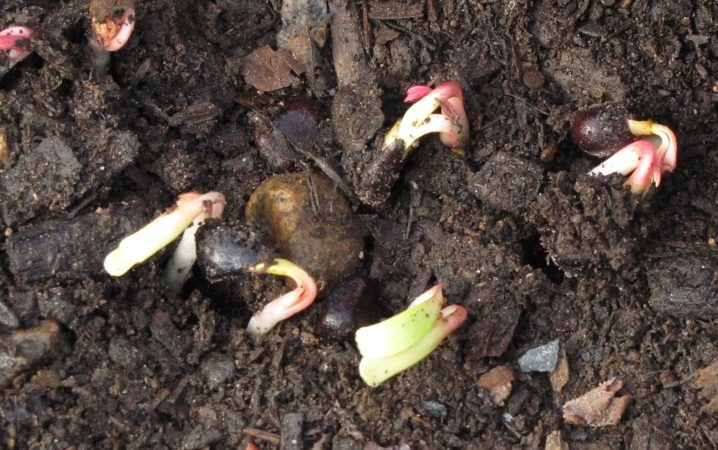
Early flowers
Early varieties ripen in late May or early June. They can delight with large buds for several weeks. In this case, special care is not required.
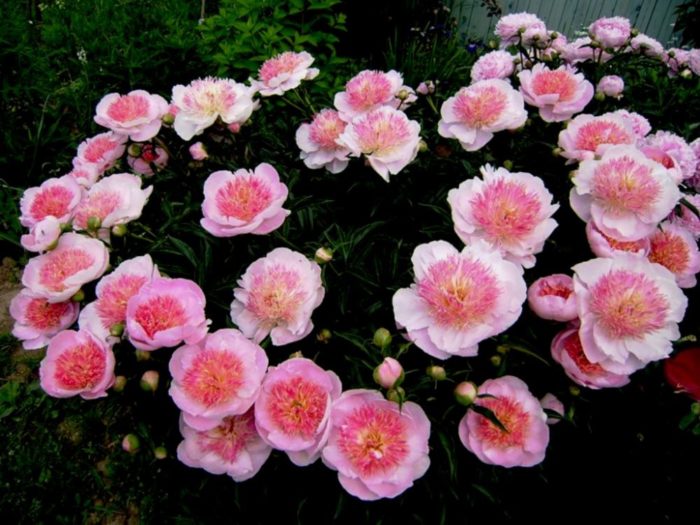
Here are some of these varieties:
- Pearl placer, with a Japanese bud. One bush can have over ten flowers, and the bush itself is undersized (up to 85 cm in height).
- Edulis Superba, the height of the bush reaches 120 cm. It has rich pink buds that reach about 10 cm in diameter. The aroma is persistent.
- Germaine Bigot is a delicate pink color. The buds do not exceed 14 cm, and the bush grows to a height of about 80 cm.
- Marshal MacMahon is a variety with double buds, the size of which reaches 12 cm.
- Sarah Bernhardt grows up to 100 cm. The bush can contain up to 10 buds at a time.
Finding flowers that will start to delight gardeners in early summer is not difficult. You just need to understand what color you want to see. Moderate watering and timely planting will allow the peony to grow quickly. However, the first flowers appear, as a rule, after 2-4 years.
Description of popular varieties of pink peonies
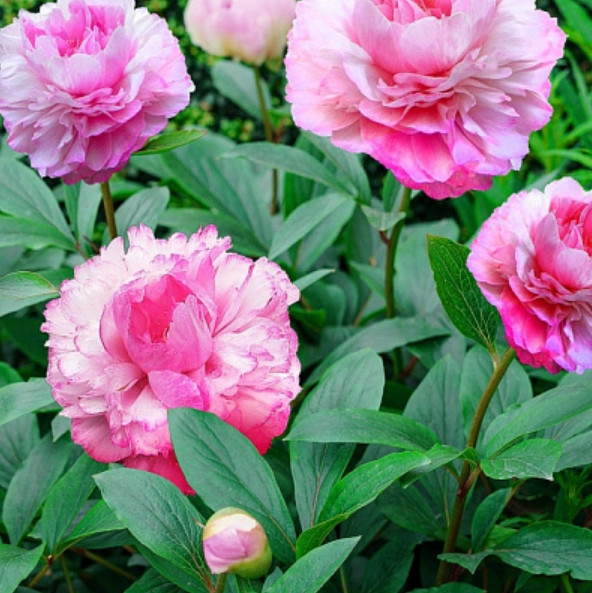 |
Grade 1. Joker
‘)); Description:
Loves fertile soil, sun or light partial shade, hardy. Does not tolerate stagnant water and cold wind |
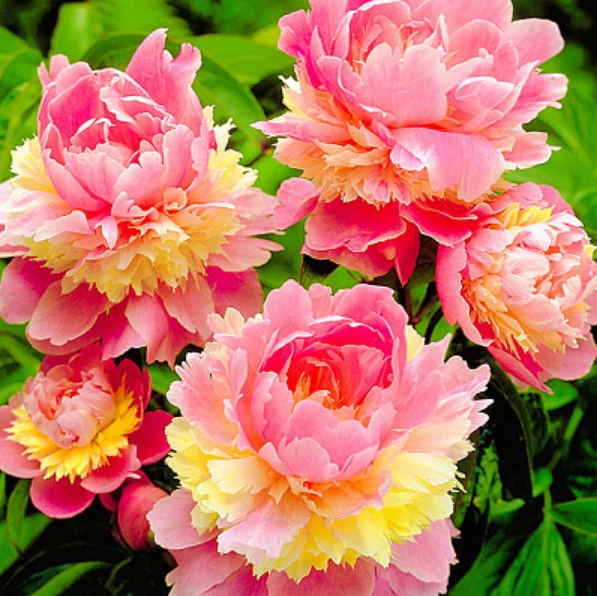 |
Grade 2. Sherbet (Sorbet) Description:
Unpretentious perennial plant. A distinctive feature of the variety is a bright aroma of freshness. Curly leaves gradually change color from bright green to crimson |
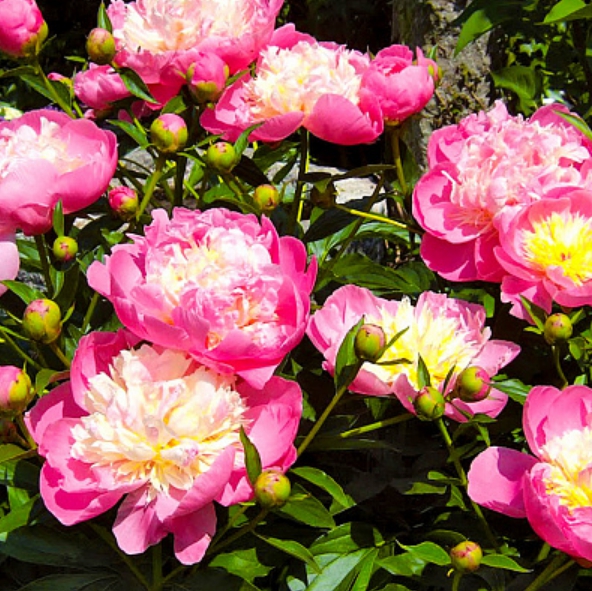 |
Grade 3. Bowl of Beauty Description:
Winter-hardy, loves loamy soils, sun or partial shade, does not grow in areas with a close occurrence of groundwater. Has a delicate scent |
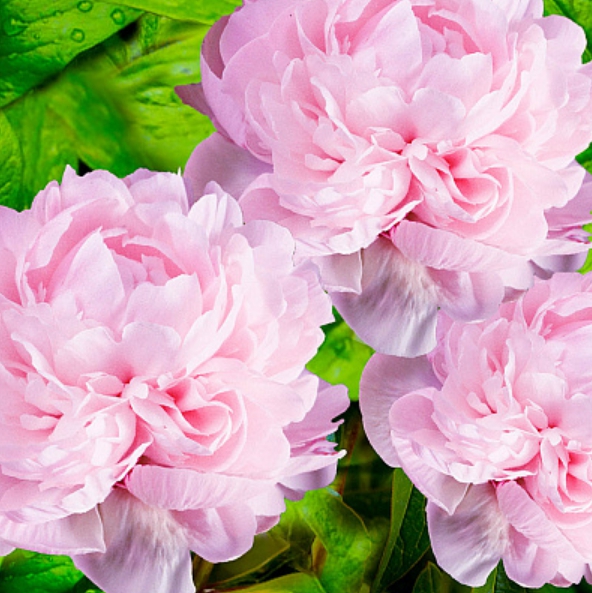 |
Grade 4. Nancy Nora ‘)); Description:
Has the most pleasant aroma of the species. Loves light, nutritious fresh soil, does not tolerate soil compaction |
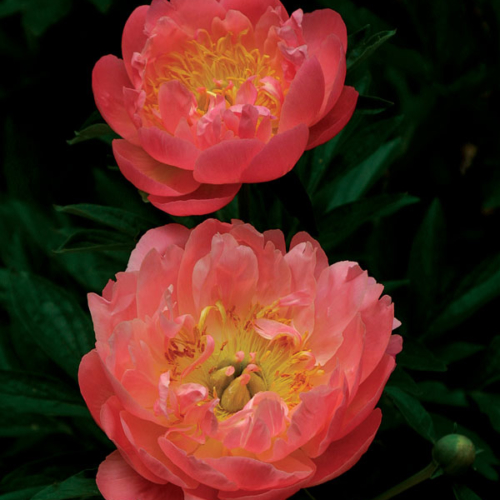 |
Grade 5. Pink Hawaiian Coral
Description:
Flowers smell like freshly cut hay, cut resistant |
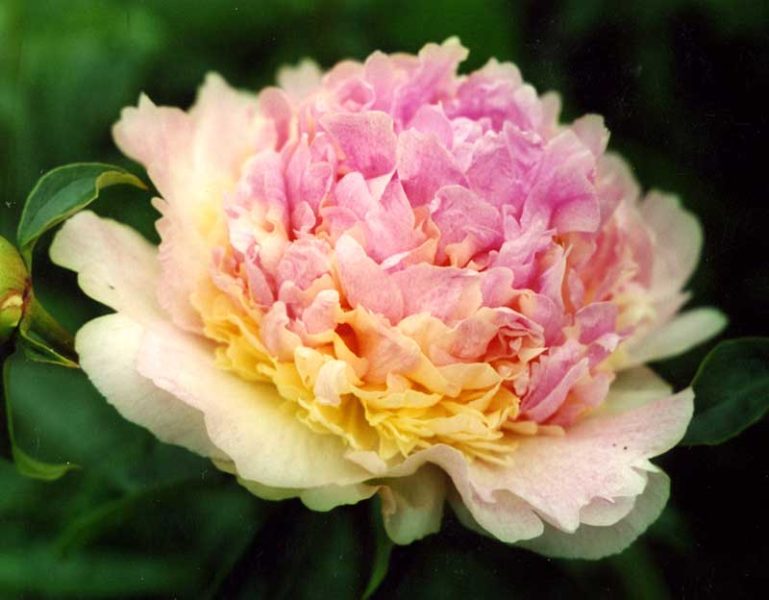 |
Variety 6. Raspberry Sunday
Description:
Has the scent of a blooming rose. The leaves are dark green, shiny. The variety is undemanding to care, winter-hardy |
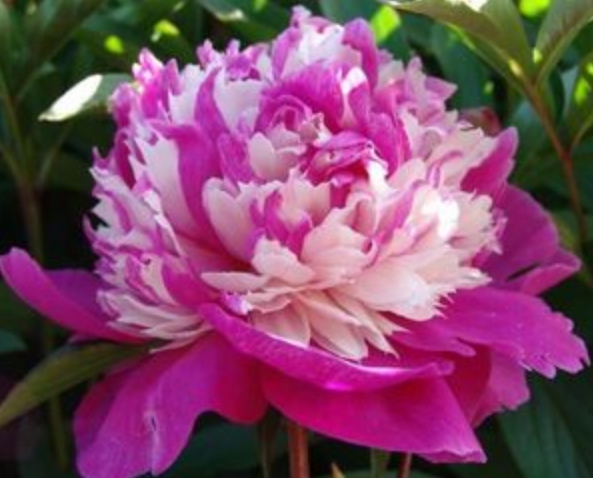 |
Grade 7. Celebrity
Description:
Celebrity is one of the most beautiful herbaceous peonies, unpretentious, frost-resistant. Leaves turn crimson by autumn. Cut flowers last 10 days |
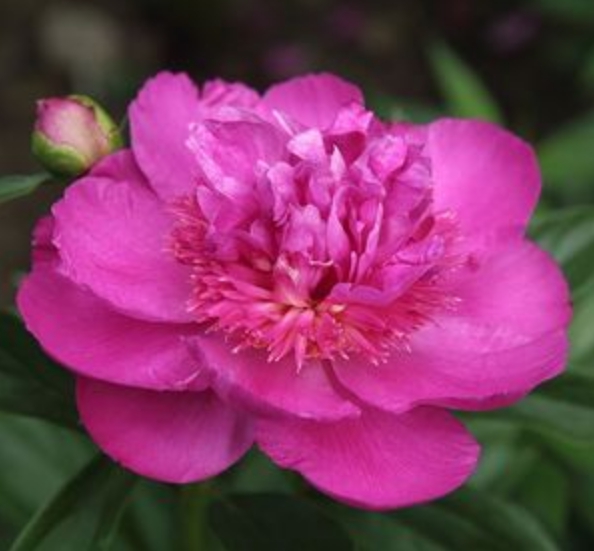 |
Grade 8. Mirage
Description:
Has a strong aroma similar to that of jasmine. Frost resistant |
Growing a flower, how to plant it in open ground
To grow healthy, abundantly flowering bushes, you need to follow certain rules.
Planting by root cuttings
Root cuttings are areas of the rhizome, 2-5 cm long. Such a cutting necessarily contains a bud and a root. Harvesting of planting material is carried out in July-August. Propagation by root cuttings is carried out according to the following algorithm:
- Dig up the rhizome, remove old roots and earth.
- Divide the rhizome into cuttings.
- Disinfect the cuttings by soaking them for 2 hours in a pink solution of potassium permanganate.
- Dry the planting material, sprinkle the sections with crushed coal, leave to dry overnight.
- In the prepared bed, plant the cuttings at a distance of 15 cm from each other.
The plot with cuttings is shaded from the sun, watered regularly, weeds are weeded, mulch for the winter. The first flowers will appear on plants in 3 years.
Important! In the first two years after transplanting, all the buds on the bush are cut off. This is done to stimulate the growth of the root system, which could ensure lush flowering in the future.
What time is the boarding
Most often, a peony is propagated by dividing the rhizome.The most suitable time for planting a peony: late April - early May and late August - early September. During these periods, the formation of an "active" root system occurs, those roots that suck water from the soil.
Location selection
Can grow in one place and feel great up to 30 years old. Conditions for landing:
- open, sunny place, in the shade the peony will not bloom;
- nutritious soil, loose;
- groundwater at the site should not be close;
- high-quality drainage;
- the absence of other perennials, buildings nearby;
How to prepare the soil and flower for planting
The site for planting the White peony variety is prepared in three to four weeks:
- A hole is dug with a depth and diameter of 60 cm.
- At the bottom, 10 cm of drainage is laid (expanded clay, broken brick).
- The hole is filled ½ with a mixture of soil, forming a mound.
Important! It is not recommended to divide and transplant a plant under 3 years old. Plant preparation:
Plant preparation:
- All the stems of the selected plant are cut off.
- Carefully dig out the root system, being careful not to damage the adventitious roots.
- The soil is removed from the roots so that the buds are visible.
- The accessory roots are cut, leaving 10-12 cm.
- Rotten, dried out areas of rhizomes are removed, cuts are sprinkled with crushed coal.
- The rhizome with a pruning shears or a sharp knife is divided into parts so that in each division there are 2-3 developed buds and 2 adventitious roots.
Planting procedure step by step
In order for the peony to quickly take root and begin to bloom, it must be planted correctly:
- The rhizomes are placed in a prepared and well-spilled hole.
- The upper kidney is positioned flush with the ground.
- They fill the hole with soil, compacting it.
- The landing site is mulched with hay, sawdust.
- Watering.
A peony planted according to all the rules will take root well and bloom profusely
Planting with seeds (for breeding)
Getting seeds is troublesome, many hybrids do not bear fruit at all. Peony seed propagation features:
- peony seeds peony White Cap tightly similar;
- only every fifth or sixth seed from those planted germinates;
- flowers on peonies grown from seeds will appear only 6-7 years after planting.
The collection of seeds is carried out in August, when the capsules have just begun to open. The seeds are placed in a container with calcined wet sand.
A two-stage stratification is carried out:
- Heat stratification. Wet sand with seeds is heated twice to +30 ° C. After heating, the sand is cooled to room temperature and watered.
- Cold stratification. The seeds germinated in the sand are transferred to peat pots. Seedlings are kept for 3 months at a temperature of + 5 ... + 10 ° С.
After the stages of stratification, young peonies are transferred to a room, where they live until May, when they can be transplanted into open ground.
Diseases, pests and ways to control them
The main pests and diseases of peonies:
Rust. Spots on leaves and shoots. Collect and burn shoots and leaves, spray the plant with 1% Bordeaux liquid. The same measures for phyllostictosis (small brown spots with a dark purple rim, premature drying of leaves), brown spot (large brown spots, the leaf looks like burnt) and brown spot (bilateral brown-brown, rounded or elongated spots with a darker rim, leads to weaken the bush).

Unique color of peony Coral Pink
- Gray rot. A gray bloom appears at the base of the stem, then it darkens and breaks. Large brown spots appear on the tips of the leaves. The leaves are deformed and dry out. Small buds turn black and also dry up. The edges of the blossoming petals turn brown and dry. The control method is correct agricultural technology and fungicide treatment.
- Powdery mildew. It is recognized by a whitish bloom on the upper part of the leaves. Treatment with soap and soda solution.
- Ring mosaic of leaves. Light green and yellowish stripes, rings, half rings are formed on the leaves between the veins. Viral disease, collect and burn damaged shoots. With a strong defeat, the bush is destroyed.
Pink Hawayan Coral peony will delight you with lush flowering in early summer.The plant is characterized by a unique picture of buds burning in the light.
Planting peonies in autumn
Step 1
Digging a bush
Process:
tie the stems on the bush so that they do not break and damage the buds;
trim them with sharp pruning shears one third of the height;
dig in a bush around the perimeter;
lift carefully so as not to damage the roots;
rinse the rhizome to see the buds
Step 2. Dividing the bush
Process:
drive a stake into the middle of the rhizome and divide it into 2 parts;
cut each of them into several more pieces;
remove all unhealthy parts of the rhizome;
shorten healthy roots to 12 - 20 cm.
Each planting unit should have 3 to 5 buds and 1 to 2 strong roots.
Step 3
Planting pit preparation
Process:
dig a hole 40 by 50 cm in size;
pour nutritious soil (compost or mineral fertilizers) on the bottom;
level the compost;
spill with water and allow to absorb well.
It is better to prepare the hole in advance (before digging out the rhizomes) and let it settle so that the fertilizer will condense naturally
Step 4
Planting a peony
Process:
put the peony in the hole;
cover the rhizome with soil;
spill well with water to leave the voids;
mulch the wet soil surface with fertile compost to prevent crusting
It is important to deepen the rhizome so that the buds are 5 cm below the soil level
Seedlings purchased in packages can be planted from late April to early June, container plants - until mid-summer. It is best to divide and plant peonies growing on the site in the fall. Seed breeding of peonies is usually carried out by breeders.
Conclusions about coral peonies
Peonies are becoming more and more popular lately. Many growers grow them. In addition to the standard color, the peony is coral. There are many varieties of coral species. Gardeners are especially fond of Sunset, Beach, Sharm, Pink, Hawaiian, Fey and Supreme. Therefore, it is these varieties that were discussed in detail in the article. I must say that the plant develops well in the middle lane, ideal for growing in domestic climatic conditions. The culture tolerates frosty winters, heavy rainfall, as well as dry and hot summers. The main thing is to make a competent planting and in the future to properly care for the peony.
Quote from Oksana_Lyutova's post PEONY: VARIETIES OF CORAL SHADES
The classic color scheme of peonies has been replaced by the fashion for "coral" varieties. They can seduce not only Klara: they are unusual, beautiful, saturated with the positive energy of summer and that is why we, the inhabitants of the north, like them so much.
Collectors were very enthusiastic about the appearance of bright and unusual peonies with coral coloration. For the first time the term "coral" began to be used to describe the color of interspecific hybrids - ‘Coralie’, ‘Cytherea’, created by the outstanding breeder of the XX century, Professor Arthur Sanders (USA). Of course, the expression "coral color" does not indicate a strictly defined shade, as well as "cherry" or "crimson". Coral is a mixture of bright pink and light orange tones in varying proportions. In the 60s of the XX century, a new page was opened in the selection of varieties with coral coloration. The most fruitful results were achieved by Sam Wissing (USA) and Lyman Cousins (Canada).
Sam Wissing is known to be an amateur, like most American breeders, and experimented with breeding new varieties using X-rays and mutagenic chemicals. The first of his famous coral series was the 'Coral Charm'. The flower is huge, dark coral, at the beginning of flowering with orange saturation, the leaves are medium-sized, shiny, dark green. The 'Coral Sunset' (the most attractive and valued in Wissing's coral series) and the 'Coral Supreme' were the sequel to the 'Coral Sunset', created in the 80s. ‘Coral Sunset’ is close to ‘Coral Charm’, but with a brighter color and slightly lower in height, has a fragrance and blooms 5-7 days earlier. The ‘Coral Supreme’ is more terry, with a lighter salmon tone.Not lower in height than Coral Charm, but blooms a week earlier.
Lyman Cousins, also an amateur, famous breeder of irises and peonies. The varieties created by him are extremely appreciated by our collectors: ‘Etched Salmon’ - a graceful shape - the trademark of this variety, ‘Glowing Raspberry Rose’, ‘Ann Berry Cousins’. Among other coral varieties, the works of Klehm's Song Sparrow (USA) are interesting: ‘Pink Hawaiian Coral’, ‘Coral Magic’ and ‘Charismatic’. All varieties have upright bushes, very decorative
On cloudy days, with fog, in the evening, coral peonies attract special attention, glowing with an inner light. Many varieties received gold medals from the American Peony Society (APS) and became champions of the annual peony shows of the Moscow Flower Club (‘Etched Salmon’)
Unfortunately, the bright coral coloration of most varieties is short-lived in bright sunlight. The brightest in the bud and at the beginning of dissolution, it gradually changes, turning pale at the end of flowering to a fawn, cream, baked milk color. But at the same time, at all stages, the flowers retain their shape and remain attractive. Sometimes on one bush you can simultaneously observe the whole range of colors: from bright coral to fawn. Coral varieties can be planted in a shaded place, but there they are prone to stretching - the stems become weaker, they can deviate, fall. When growing peonies in open areas, you need to consider protection from midday rays.
Many well-known coral varieties develop well in the middle lane and are quite suitable for our climatic conditions. They have experienced periods of snowlessness with severe frosts and a number of hot and dry seasons.
Planting rules are the same as for other herbaceous hybrid peonies.
Pay attention to the acidity of the soil - the reaction must be slightly alkaline (pH not less than 7.5). Dolomite (limestone) flour or ash is used as a deoxidizer, about 200 g per 1 sq.
m. When planting a fairly large cut, the plants begin to bloom already in the second year, and by the fourth year they become very decorative. These varieties can grow without transplanting for 8-10 years, after which the bushes must be divided and planted in a new place.
Varieties of herbaceous peonies
via


